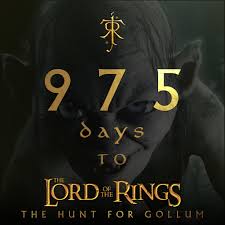
Introduction
The Hunt for Gollum is a notable fan film that has carved out a special place in the hearts of J.R.R. Tolkien enthusiasts since its release in 2009. This ambitious project is not only a testament to the dedication of the Tolkien fanbase but also showcases the power of independent filmmaking in the fantasy genre. In an era where adaptations of beloved works are prevalent, The Hunt for Gollum stands out for its authenticity and creative storytelling.
Background and Production
Directed by Chris Bouchard, The Hunt for Gollum was inspired by the events narrated in The Fellowship of the Ring. The film focuses on Aragorn’s quest to track down the infamous creature Gollum, which is pivotal to the understanding of the narrative leading to the One Ring. Made on a budget of approximately £3,000, the film was produced entirely by dedicated fans who volunteered their time, skills, and resources to bring this vision to life.
Filming took place over a mere three weeks, primarily in the UK. This rapid production time demonstrates the team’s commitment and passion for the Tolkien universe. The dedication to visual authenticity is commendable, with sets and costumes designed to reflect the rich lore of Middle-earth. With the utilisation of various locations including woods and quarries, the film offers a visually immersive experience, reminiscent of Peter Jackson’s adaptations.
Significance and Reception
Upon its release, The Hunt for Gollum found a significant audience online, garnering millions of views on platforms like YouTube. The film was praised for its adherence to the source material and the performances of the cast, which included actors who truly embodied their characters from Tolkien’s world. The film’s score and editing were also highlighted, further enhancing the viewing experience.
However, what truly makes The Hunt for Gollum stand out is its ability to unite fans and foster a sense of community. It exemplifies how creative expressions can keep beloved stories alive while encouraging amateur filmmakers to pursue their projects despite limited resources.
Conclusion
The Hunt for Gollum serves as a model for fan-driven creativity and the potential impact of independent films. In a world where major studios dominate the film landscape, the success of The Hunt for Gollum illustrates that passion can lead to remarkable results. For fans of Tolkien’s work, it not only enriches their understanding of the lore but also inspires them to explore their creativity. As the film industry continues to evolve, projects like this remind us that the spirit of storytelling belongs to everyone, regardless of their background or budget.
You may also like

Jay Z: The Evolution of a Music Legend

Harvey Weinstein: A Timeline of Legal Troubles and Impact
